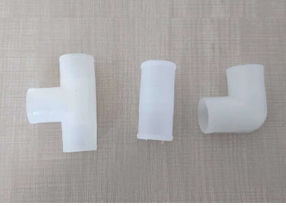Innovative Designs in FRP Fan Blades for Enhanced Performance and Efficiency
វិច្ឆិកា . 10, 2024 18:14 Back to list
Innovative Designs in FRP Fan Blades for Enhanced Performance and Efficiency
The Evolution and Impact of FRP Fan Blades in Modern Engineering
In recent years, the development of composite materials has revolutionized various industries, particularly in the realm of aerodynamics and fluid dynamics. Among these advancements, Fiber Reinforced Polymer (FRP) fan blades have emerged as a significant innovation, offering a combination of strength, lightness, and durability that traditional materials cannot match. This article will explore the characteristics, advantages, applications, and future prospects of FRP fan blades.
Characteristics of FRP Fan Blades
FRP fan blades are manufactured using a composite material made from a polymer matrix reinforced with fibrous materials. The most common fibers used in these applications are glass, carbon, and aramid fibers. This combination lends FRP blades exceptional mechanical properties, including high tensile strength and low weight. Additionally, the corrosion resistance of FRP materials makes them ideal for both marine and industrial applications.
The design flexibility offered by FRP allows for intricate shapes and efficient aerodynamic profiles, enhancing performance and minimizing energy loss. The ability to mold various shapes means that FRP fan blades can be optimized for specific applications, ensuring that they perform efficiently in their designated environments.
Advantages of FRP Fan Blades
One of the most compelling advantages of FRP fan blades is their weight-to-strength ratio. This characteristic contributes significantly to fuel efficiency in aviation and other applications, where reducing weight is paramount. Lighter blades can also lead to lower operational costs by reducing the energy needed to produce airflow.
Another critical benefit is durability. Unlike metal blades, FRP fan blades are less prone to corrosion, which can be particularly advantageous in harsh environments. This durability translates into lower maintenance costs and longer service life, making them an economically viable option in the long run.
Additionally, FRP materials can be designed to have lower noise levels compared to traditional metal fan blades, making them suitable for applications where sound pollution is a concern, such as in residential areas or near sensitive environments.
frp fan blades

Applications of FRP Fan Blades
The versatility of FRP fan blades has led to their adoption in various domains. In the aerospace industry, they are increasingly being used in jet engines and aircraft ventilation systems, where lightweight materials are crucial for performance and fuel efficiency.
In the industrial sector, FRP fans are deployed in heating, ventilation, and air conditioning (HVAC) systems, as well as in power generation facilities. Their ability to operate efficiently at high speeds makes them ideal for cooling applications, ensuring that critical machinery remains within safe operating temperatures.
Marine applications also benefit from the use of FRP fan blades, particularly in ventilation systems for ships and submarines, where corrosion resistance is essential. The pharmaceutical industry has also begun utilizing FRP blades for their biocompatibility and ease of cleaning, ensuring that stringent hygiene standards are maintained.
Future Prospects
As the demand for sustainable and efficient technology grows, the development of FRP fan blades will likely continue to advance. Research is being conducted into new composite materials and manufacturing techniques that could further enhance the performance and applicability of FRP blades. Innovations in recycling methods for FRP materials also represent a significant step toward sustainable engineering practices, tackling the challenge of waste management in composite manufacturing.
Additionally, industries are constantly looking for ways to reduce their carbon footprints, and incorporating lightweight FRP blades can contribute significantly to this goal. As manufacturing processes become more refined and cost-effective, we can expect even wider adoption of FRP fan blades across various fields.
Conclusion
In summary, FRP fan blades represent a remarkable advancement in material technology, offering numerous advantages over traditional fan blade materials. Their combination of strength, lightweight properties, and corrosion resistance positions them as a valuable asset in industries ranging from aerospace to marine applications. As technology continues to evolve, FRP fan blades will undoubtedly play a crucial role in the future of efficient and sustainable engineering.
-
High Performance Exhaust Fan – Efficient Ventilation Solutions for Home
NewsJun.10,2025
-
High-Quality Gestation Pen for Sows Durable Mobile Pig Pen & Simple Pig Pen Solutions
NewsJun.10,2025
-
High Quality Rabbit Cage Double Tier Designs & Welded Wire Mesh Supplier
NewsJun.10,2025
-
Floating Fish Feed Machine - High Efficiency Floating Fish Feed Extruder for Small Scale Production
NewsJun.10,2025
-
Premium Poultry Housing Solutions Mobile & Commercial Free Range Options
NewsJun.10,2025
-
Industrial FRP Fans Corrosion-Resistant Blades & Centrifugal Systems
NewsJun.09,2025






